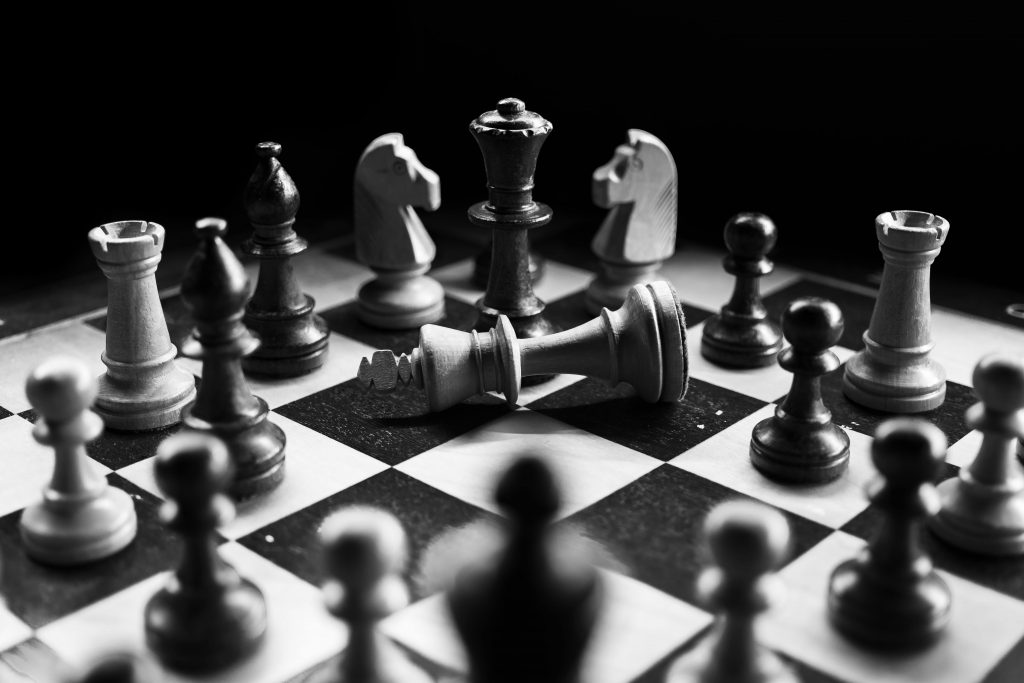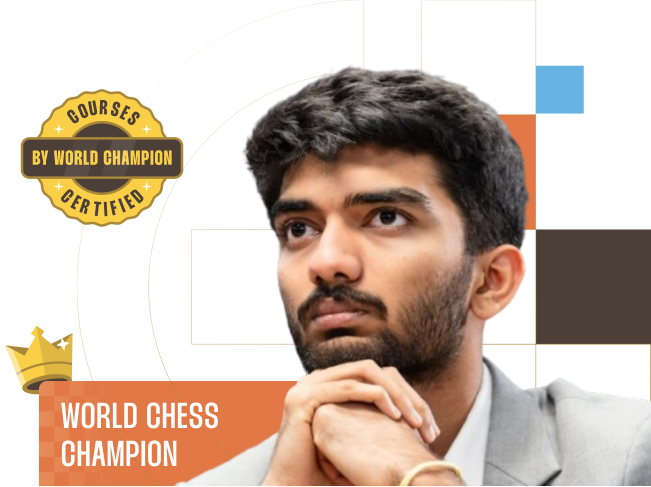Evaluating a chess game is a skill that separates good players from great ones. For hardcore chess players, developing the ability to assess positions like a chess grandmaster can be the key to significant improvement. Grandmasters don’t just make moves—they understand the position, calculate variations, and strategically plan for the long term. In this detailed guide, we’ll break down five easy steps to help you evaluate a chess game like a chess grandmaster. Whether you’re analyzing your games or studying classics, these steps will elevate your understanding.

1. Assess the Material Balance
One of the first steps in evaluating a position is to count the material on the board. Chess grandmasters don’t stop at just adding up the points of pieces; they consider the activity and potential of each piece.
How to Evaluate Material:
- Assign standard values to pieces: Pawn = 1, Knight = 3, Bishop = 3, Rook = 5, and Queen = 9.
- Compare material differences but also factor in positional nuances. For example, a pair of active bishops might outweigh a material deficit.
Example Game: In the 1992 match between Garry Kasparov and Nigel Short, Kasparov sacrificed material early to gain a powerful initiative. While Kasparov was down in material, his active pieces and attacking prospects ultimately led to victory.
Key Tip:
Look beyond raw material count and consider whether pieces are actively participating or merely sitting idle.
2. Analyze King Safety
The safety of the king is paramount in any chess game. A compromised king position often outweighs other positional advantages, as it opens the door for tactical shots and checkmate threats.
Factors to Consider:
- Pawn structure around the king.
- Opponent’s attacking pieces.
- Open or semi-open files near the king.
Example Game: In Bobby Fischer’s famous “Game of the Century” against Donald Byrne (1956), Fischer’s ability to exploit Byrne’s exposed king led to a brilliant attacking game. His sacrifices created unstoppable threats, showcasing how king safety can define the outcome.
Key Tip:
When evaluating a position, ask yourself: Is my king safe? Is my opponent’s king vulnerable? Plan accordingly to attack or defend like a chess grandmaster.
3. Evaluate Pawn Structure
Pawn structures are the backbone of any position, influencing piece activity, king safety, and endgame potential. Understanding pawn weaknesses and strengths is crucial for long-term planning.
What to Look For:
- Weak pawns: Isolated, doubled, or backward pawns are potential targets.
- Strong pawns: Connected passed pawns can be decisive in the endgame.
- Open and semi-open files: These are valuable for rooks and queens.
Example Game: In Anatoly Karpov’s game against Viktor Korchnoi in the 1978 World Chess Championship, Karpov’s superior pawn structure and ability to create a passed pawn on the queenside allowed him to exert pressure throughout the game.
Key Tip:
Identify pawn weaknesses and potential breaks. Use your pawns to control key squares and restrict your opponent’s pieces.
4. Assess Piece Activity
Active pieces are a hallmark of strong chess. Even if you have a material or positional advantage, poorly placed pieces can undermine your position.
How to Evaluate Piece Activity Like a Chess Grandmaster:
- Are your pieces centralized and controlling critical squares?
- Are your opponent’s pieces passive or restricted?
- Can you create threats or improve your piece placement?
Example Game: Magnus Carlsen’s endgame masterpiece against Fabiano Caruana in the 2018 World Chess Championship exemplifies piece activity. Carlsen’s ability to improve his king and knight’s positions in a seemingly equal endgame highlighted the power of active play.
Key Tip:
Always look for ways to improve your pieces, even in seemingly static positions. Activity often outweighs material in dynamic games.
5. Calculate Tactical Opportunities
Chess grandmasters excel at spotting tactics, whether to gain material, create threats, or defend. Tactical vision is a crucial part of game evaluation.
Steps for Tactical Evaluation:
- Look for immediate checks, captures, and threats (forcing moves).
- Identify weaknesses in your opponent’s position.
- Visualize combinations and calculate accurately.
Example Game: In Alexander Alekhine’s game against Efim Bogoljubov (1934 World Chess Championship), Alekhine’s ability to calculate deep combinations allowed him to exploit tactical opportunities and secure a spectacular win.
Key Tip:
When evaluating a position, spend time identifying tactical possibilities. Tools like those offered on CircleChess can help sharpen your tactical skills.
Putting It All Together: A Comprehensive Evaluation
Once you’ve analyzed material, king safety, pawn structure, piece activity, and tactics, combine these elements for a holistic evaluation. Consider:
- What are my immediate threats and plans?
- What are my opponent’s resources?
- How can I improve my position incrementally?
Example Game: In the 1999 “Immortal Zugzwang Game” between Garry Kasparov and Veselin Topalov, Kasparov’s ability to combine positional understanding with tactical brilliance showcased all the elements of advanced evaluation.

Practice Makes Perfect
Evaluating a chess game like a chess grandmaster requires consistent practice. Analyze your games deeply, study master games, and use advanced tools to improve. Platforms like CircleChess offer personalized training and real-time feedback, helping hardcore players develop chess grandmaster-level skills.
Conclusion
Mastering the art of game evaluation is a rewarding journey for any hardcore chess player. By following these five steps—assessing material balance, analyzing king safety, evaluating pawn structure, prioritizing piece activity, and spotting tactical opportunities—you can start thinking like a chess grandmaster. Pair these strategies with dedicated practice and modern tools, and you’ll see your understanding and performance soar.
Ready to take your chess skills to the next level? Visit CircleChess today and discover how our AI-driven platform and elite coaching can transform your game. Or, you can check this blog to get ideas about the best chess books available in the market. Whether you’re aiming for tournament success or personal mastery, we’re here to guide you every step of the way.





